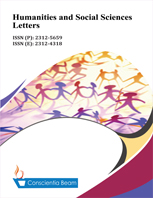Applying vroom expectancy theory to analyse employee motivation: A study of commercial banks in Vietnam
DOI:
https://doi.org/10.18488/73.v12i4.3902Abstract
In researching motivation, the process approach is better and has more potential than the content approach. This research aims to apply Vroom expectancy theory, a process-based approach to motivation to gain a greater understanding of employee motivation within the commercial banking sector in Vietnam. Additionally, this study seeks to validate the applicability of the expectancy theory by surveying 901 employees from 16 commercial banks with different total assets and numbers of employees. The data analysis involved the utilization of Cronbach's alpha, Exploratory Factor Analysis (EFA), confirmatory factor analysis (CFA) and structural equation model (SEM). This study reveals that there is a positive relationship between expectancy (E), intrinsic instrument (I-IN), intrinsic valence (I-V) and employee motivation (EM). Employee motivation has an impact on job performance. Nevertheless, it has been observed that the presence of extrinsic valence (E-V) and extrinsic instruments (E-IN) do not significantly impact employee motivation despite the high employees’ level of need for extrinsic valence. This finding deviates considerably from previous studies that applied Vroom's theory. These findings further emphasize the notion that motivation is a dynamic process. Using a process approach in investigating motivation has significant efficacy and employee motivation has a substantial impact on employee performance especially in the context of commercial banks in Vietnam.

